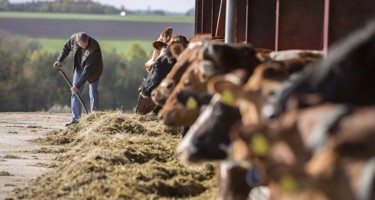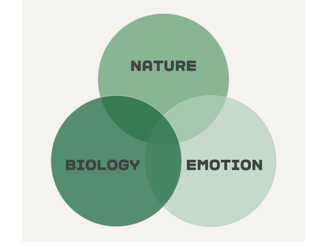
What exactly is good animal welfare for a dairy cow? This greatly depends on who you ask. There can be big differences between what a consumer regards as good animal welfare and what an expert in the field or a farmer thinks is good animal welfare.
According to the World Organisation for Animal Health, animal welfare is a complex and multi-faceted subject and there is no single generally accepted definition. In society, there are many different opinions on how to define good or bad animal welfare. For example, there may be large differences between what consumers regard as good animal welfare and what a scientist or farmer considers to be good animal welfare.
The reason why there is no unequivocal definition of animal welfare is that, depending on your background or focus, you can consider animal welfare as a question of biology, nature or emotion.
Animal welfare from a biological point of view
Many researchers, farmers and others who work with livestock production primarily consider animal welfare from a biological viewpoint. This biological viewpoint is about whether the cow is healthy and well, and animal welfare can be measured in terms of the amount of milk produced, the amount of cortisol (stress hormone) in the cow’s blood, good physical condition, low somatic cell count, whether the cow has been healthy throughout its life and so on.
Animal welfare based on naturalness
Many consumers primarily consider animal welfare as a matter of naturalness. If a cow has the opportunity to live as it would have in nature, this constitutes good animal welfare. For instance, this involves whether a cow can graze, whether it reproduces naturally, remains with its calf and is not dehorned.
Animal welfare from the emotional perspective
A common viewpoint of both consumers as well as professionals is the emotional perspective, which is a little more difficult to measure. In this perspective, the animal’s mental health and well-being is a prime consideration: Does it react calmly and curiously towards the farmer and to strangers, does it behave like a normal cow compared to other cows in the herd, does it behave as if it feels secure and content with the conditions it is living in?
The big question separating consumers and professionals into two camps is whether biology, naturalness and emotions can stand alone.
If only biology is considered, then a cow in modern milk production undoubtedly has good animal welfare. If only naturalness is considered, it is less certain that the animal welfare at a modern dairy farm is considered up to par.
At Arla, we believe that a dairy cow’s animal welfare should be determined by comparing all three parameters – biology, naturalness and emotions – which is internationally recognized as good practice through the “Five Freedoms”.

The Five Freedoms
“The Five Freedoms” was first presented by the UK Farm Animal Welfare Council in 1979, and since then they have been recognised by veterinarians and animal welfare campaigners all over the world.
- Freedom from Hunger and Thirst – by ready access to water and diet to maintain health and vigour.
- Freedom from Discomfort – by providing an appropriate environment including shelter and a comfortable resting area.
- Freedom from Pain, Injury or Disease – by prevention or rapid diagnosis and treatment.
- Freedom to Express Normal Behaviour – by providing sufficient space, proper facilities and company of the animal’s own kind.
- Freedom from Fear and Distress – by ensuring conditions and treatment which avoid mental suffering.
For obvious reasons, it is not possible to guarantee these five freedoms for animals in wild nature, where food, safety, shelter, good resting areas, and freedom from pain and fear is impossible to achieve in many cases. Therefore, the five freedoms can only be applied when discussing animal welfare for production animals, livestock and pets.
The EU-financed project WelfareQuality® has extended the Five Freedoms into four principles and 12 criteria in order to integrate farm animal welfare into the food chain.
Arla’s position and requirements for animal welfare are based on these criteria and are specified in our quality assurance programme “ArlaGården®”, which is a practical framework and audit system for how all Arla farmers must take care of their animals.
If the requirements and the minimum performance levels are not met, prompt actions are taken by the farm to address any causative factors. As a farmer owned dairy company, every Arla farmer is committed to the high-level standards and is held accountable to ensure optimal conditions for the health and wellbeing of every cow and calf.
Also read: How are dairy cows treated?